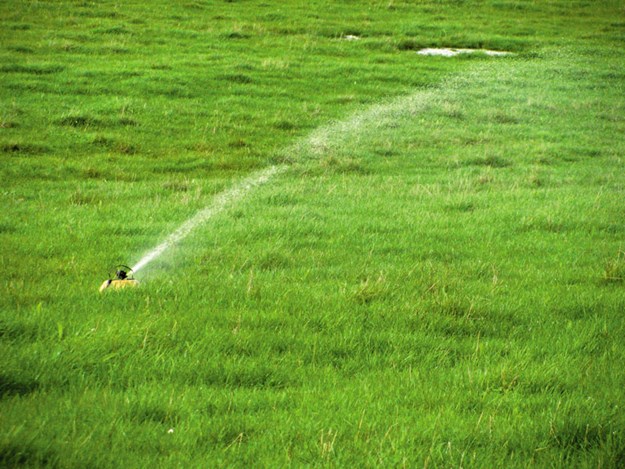Farm advice: Big impacts on effluent storage
DairyNZ effluent export shares a few tips to reduce the amount of effluent storage you require
We’re all familiar with the saying, ‘reduce, reuse, recycle,’ and the same principle can be applied to water use in the milking shed to significantly slash the amount of effluent storage you require.
 |
|
There are a few ways to reduce water use in the milking shed
|
After taking into account your soil-type, as we discussed in the last column (you can recap this at farmtrader.co.nz), shed water use is the second most important factor to consider when determining how much effluent storage your farm needs.
I’m sure many of you know roughly how much water you use to clean up the milking shed, but it’s a good idea to calculate exactly how much. On average, most dairy farms use around 70 litres per cow, per day in the milking shed.
Some of you may be using slightly more, or less, depending on your shed set up and whether you’re milking once or twice a day. By comparison, an interesting tidbit is the average human uses around 250 to 300 litres per day.
Waste not, want not
There are a few ways to reduce water use in the milking shed, but I believe the one that has the biggest impact is installing a ‘green water’ washing system.
By washing your yard with recycled effluent, or ‘green water’, you can cut water use by up to 65%. This can significantly reduce your effluent storage requirements by 50%.
This could see a 500-cow farm drop their water use from 23,000 litres per day to 12,600 litres and reduce their pond size from 5700 cubic meters to 2400 cubic meters.
Along with reducing water use and effluent storage, there are also significant electricity and labour savings. If we consider the above example, that farm would also reduce their effluent irrigation from 77 minutes a day to 42 minutes.
That 35-minute saving would free up staff to do other tasks. So, if you’re looking at installing or upgrading your effluent storage, I’d encourage you to consider investing in a green water washing system.
You may be surprised and find the cost is largely offset by the money you save on requiring a smaller effluent storage pond or tank.
Application depths
Another key factor to consider is effluent application depths. Once again, this comes back to the importance of understanding your soil-type. If your farm is on high-risk soils, it’s a
good idea to take the ‘little and often’ approach and irrigate effluent on your paddocks whenever conditions are right – dry soil and fine weather.
By using shallow application depths of 3mm, rather than 5mm and 10mm depths, this enables you to irrigate more often and reduces your storage requirements.
I know this might sound contradictory, but let me explain. Soil is like a sponge – it can only hold so much water before it’s either taken up by pasture or leaks out the bottom into groundwater.
By applying shallow amounts of effluent this increases the number of opportunities when conditions are ideal to irrigate. But as with most things, there is a trade-off.
While shallow application depths will significantly reduce your effluent storage requirements, it will require more labour, as you’re irrigating more frequently, and through the busy calving period.
So, it’s worth weighing up whether you’d rather spend a bit more and get a larger pond, which will allow you to store your effluent and apply deeper application rates when conditions are better in spring, summer and autumn.
As I mentioned previously, everyone’s effluent storage requirements are different and there’s no one-size-fits-all approach, so if you’re looking at upgrading or installing an effluent system talk to an accredited effluent system design company to ensure you get the right system for your farm.
Farmer advocates green water wash system
Manawatu farmer Jonathan Sievwright, who milks 230 cows on his Feilding farm, says there’s a number of benefits to having a green water wash system.
"The biggest benefit is it reduces our water use in the cowshed. The system saves us around 3000 litres a day, and that’s a conservative estimate. "We’re on a rural water scheme and pay for every litre of water we use, so for us, that’s a significant saving."
He says these systems also reduce the amount of effluent storage required, as you’re generating less waste in the cowshed and save staff time.
"You’re not having to stand outside for 40 mins a day hosing the yard. It saves us 20mins each milking. "If you’re going to upgrade your system, I’d seriously consider it," Jonathan says.
For more information about effluent storage and management visit dairynz.co.nz/effluent.
Keep up to date in the industry by signing up to Farm Trader's free newsletter or liking us on Facebook



.jpg)
.jpg)









.jpg)

